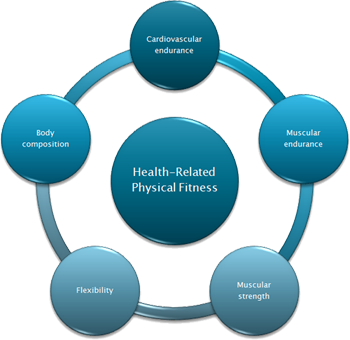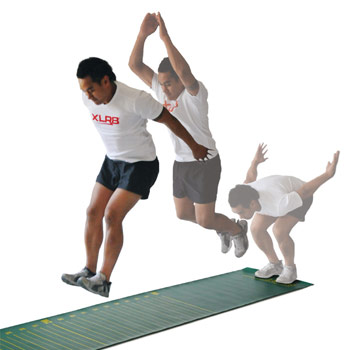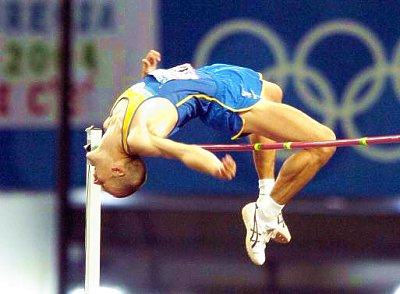
This topic has 4 sections.
Reading
n
The President’s Challenge, The Adult Fitness Test.
n
The Cooper Institute, FITNESSGRAM Tests.
n
FITNESSGRAM Standards for
Healthy Fitness Zone – Boys.
n
FITNESSGRAM Standards for
Healthy Fitness Zone – Girls.
n
Excel
- Presidents_Challenge_normative_data.xls
Purpose
n
Define key terminology and understand differences between health-related fitness
and performance fitness.
n
Differentiate between basic physical abilities and skills assessment.
n
Evaluate methods to measure components of physical fitness, such as aerobic
capacity, body composition, muscular strength and endurance, and flexibility.
n
Evaluate different test batteries that are used to assess physical fitness in
children and adults.
INTRODUCTION
Over the years, there has been a dramatic shift in fitness
testing methods. Earlier methods were focused on sport related skills and
performance, while more recent test batteries emphasize health-related fitness.
Although both methods assess similar physical attributes, they are not the same
and can produce different results.
Health-related
fitness
The development of health-related physical fitness tests
represented a shift away from athletic performance testing to health promotion.
With the growing body of evidence supporting the value of regular, vigorous
exercise to decrease mortality and morbidity, new health-related fitness tests
were developed. The first health-related fitness test batteries evaluated
physiological function that are related to positive health including:
·
Cardiorespiratory function
·
Body composition
·
Abdominal and low back/hamstring musculoskeletal
function
Historically, muscular strength and endurance was not
considered a health-related fitness component but both have been added into
current test batteries as more evidence showed the need for improvement in these
areas. Additionally, all five health-related fitness components are given equal
value as each significantly impacts health as illustrated in Figure 14.1.
Figure 14.1 Current components of
health-related physical fitness.

Performance fitness
Performance fitness (or sometimes called skill-related
fitness) was the early frontrunner in physical testing. Performance testing
began by trying to identify basic physical skills and abilities to predict
athletic performance. Many countries following World War II wanted to be able to
identify the characteristics of “athletic ability” and a great deal of money was
invested into develop these test batteries. These tests were performance based
and the actual tests could differ depending on the specific sport skills. The
test battery was given to children in schools and recreational programs to
identify potential talent at a young age. Those children that scored highly for
certain abilities were admitted into training programs for various sports. The
general components of early performance fitness were:
·
Muscular strength
·
Muscular endurance
·
Muscular power
·
Cardio-respiratory endurance
·
Agility
·
Speed
These components have morphed over the years and depending
on the sport, cardio-respiratory endurance may not be included. Additionally,
balance, coordination and reaction time have been added to modern test
batteries. Most modern testing batteries contain the components drawn in Figure
14.2.
Figure 14.2 Components of
skill-related physical fitness.

Many large sporting organizations still assess performance
physical fitness. The most widely publicized performance test in the United
States is the NFL Combine in February each year. The Combine assesses physical
performance common in highly skilled football players, while many health-related
fitness components such as cardiovascular endurance, body composition, and
flexibility are not included. Here’s an excerpt from the
NFL website describing the
combine test battery:
Each February, hundreds of the very best college football players are invited to
the NFL Scouting Combine in Indianapolis, Ind., where executives, coaches,
scouts and doctors from all 32 NFL teams conduct an intense, four-day job
interview in advance of the NFL Draft. Here is a brief breakdown of the
measurable drills:
40-yard dash
The 40-yard dash is the marquee event at the combine. It's kind of like the
100-meters at the Olympics: It's all about speed, explosion and watching skilled
athletes run great times. These athletes are timed at 10, 20 and 40-yard
intervals. What the scouts are looking for is an explosion from a static start.
Bench press
The bench press is a test of strength -- 225 pounds, as many reps as the athlete
can get. What the NFL scouts are also looking for is endurance. Anybody can do a
max one time, but what the bench press tells the pro scouts is how often the
athlete frequented his college weight room for the last 3-5 years.
Vertical jump
The vertical jump is all about lower-body explosion and power. The athlete
stands flat-footed and they measure his reach. It is important to accurately
measure the reach, because the differential between the reach and the flag the
athlete touches is his vertical jump measurement.
Broad jump
The broad jump is like being in gym class back in junior high school. Basically,
it is testing an athlete's lower-body explosion and lower-body strength. The
athlete starts out with a stance balanced and then he explodes out as far as he
can. It tests explosion and balance, because he has to land without moving.
3 cone drill
The 3 cone drill tests an athlete's ability to change directions at a high
speed. Three cones are placed in an L-shape. He starts from the starting line,
goes 5 yards to the first cone and back. Then, he turns, runs around the second
cone, runs a weave around the third cone, which is the high point of the L,
changes directions, comes back around that second cone and finishes.
Shuttle run
The short shuttle is the first of the cone drills. It is known as the 5-10-5.
What it tests is the athlete's lateral quickness and explosion in short areas.
The athlete starts in the three-point stance, explodes out 5 yards to his right,
touches the line, goes back 10 yards to his left, left hand touches the line,
pivot, and he turns 5 more yards and finishes.
Although we could apply the NFL Combine test to other
populations, many of the tests would not be valid outside of football players.
Assessing muscular strength and endurance by a 225 bench press would result in
zero repetitions by most all individuals in non-athletic populations. In the
next section we will discuss testing batteries for both physical abilities and
specific skills in normal populations.
Basic physical
abilities vs. skills
Today’s physical educators are challenged with teaching
skills but evaluating students on both skill performance and physical abilities.
Many of these skills and abilities can overlap, especially in developing
children, but there are some important differences. A basic example of a
physical ability is jumping. A child needs to be able to jump and land safely
for optimal bone development and safety during play. There are numerous methods
to measure jumping ability, such as vertical jump, broad jump, long jump, high
jump, etc. The vertical jump and broad jump can be classified as basic physical
abilities as all children should be able to complete the activity, but the long
jump and high jump are skill based and are highly influenced by other factors
such as speed and technique (see Figures 14.3 and 14.4).
Figure 14.3
Jumping ability measured by vertical jump and broad jump.


Figure 14.4
Jumping ability and sport skills measured by long jump and high jump.

